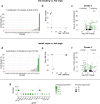This is a preprint.
A Hypothalamic Circuit that Modulates Feeding and Parenting Behaviors
- PMID: 39091749
- PMCID: PMC11291030
- DOI: 10.1101/2024.07.22.604437
A Hypothalamic Circuit that Modulates Feeding and Parenting Behaviors
Update in
-
A hypothalamic circuit that modulates feeding and parenting behaviours.Nature. 2025 Sep;645(8082):981-990. doi: 10.1038/s41586-025-09268-5. Epub 2025 Jul 30. Nature. 2025. PMID: 40739345
Abstract
Across mammalian species, new mothers undergo considerable behavioral changes to nurture their offspring and meet the caloric demands of milk production1-5. While many neural circuits underlying feeding and parenting behaviors are well characterized6-9, it is unclear how these different circuits interact and adapt during lactation. Here, we characterized the transcriptomic changes in the arcuate nucleus (ARC) and the medial preoptic area (MPOA) of the mouse hypothalamus in response to lactation and hunger. Furthermore, we showed that heightened appetite in lactating mice was accompanied by increased activity of hunger-promoting agouti-related peptide (AgRP) neurons in the ARC. To assess the strength of hunger versus maternal drives, we designed a conflict assay where female mice chose between a food source or a chamber containing pups and nesting material. Although food-deprived lactating mothers prioritized parenting over feeding, hunger reduced the duration and disrupted the sequences of parenting behaviors in both lactating and virgin females. We discovered that ARCAgRP neurons directly inhibit bombesin receptor subtype-3 (BRS3) neurons in the MPOA, a population that governs both parenting and satiety. Selective activation of this ARCAgRP to MPOABRS3 circuit shifted behaviors from parenting to food-seeking. Thus, hypothalamic networks are modulated by physiological states and work antagonistically during the prioritization of competing motivated behaviors.
Figures














References
Publication types
LinkOut - more resources
Full Text Sources
